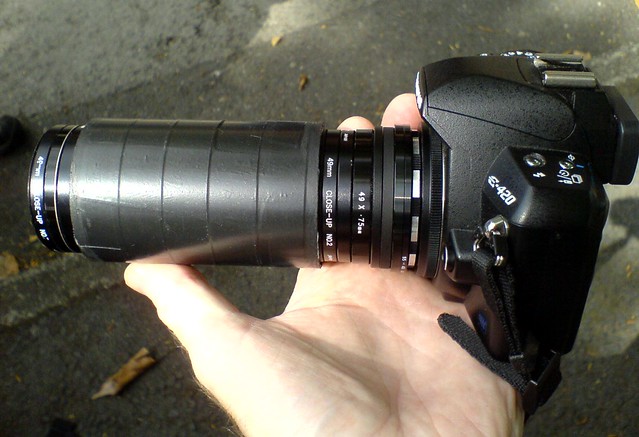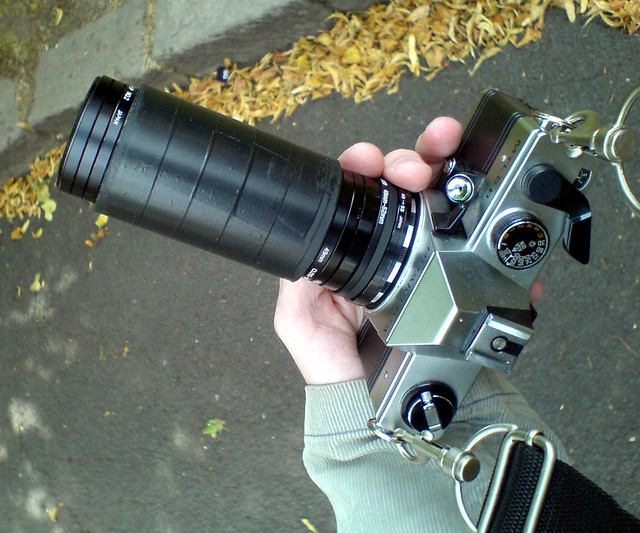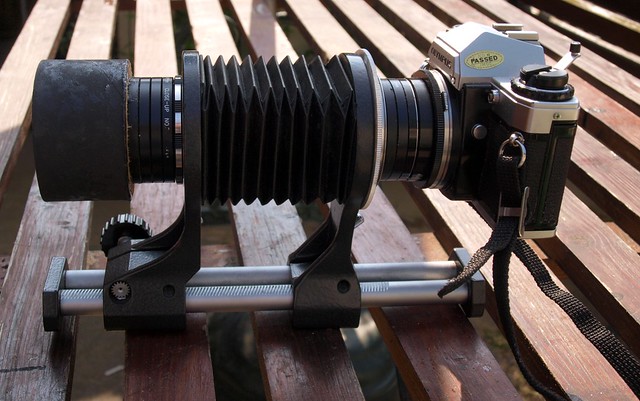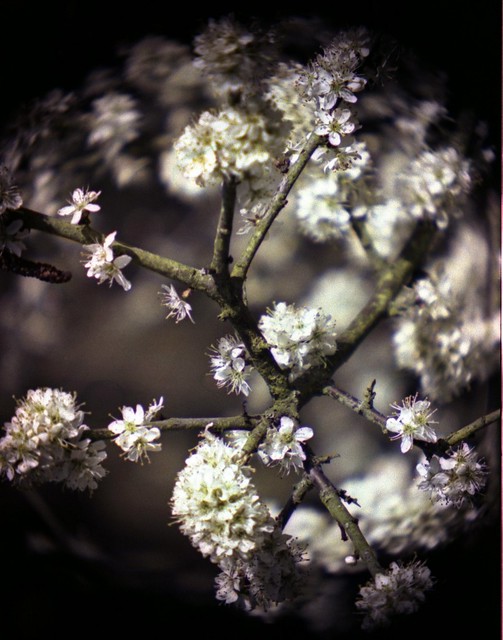Yesterday I blogged about some of my attempts to get the Petzval swirl effect using home-made lenses in all formats from 4/3, 135 (35mm) to larger formats. The swirl effect is certainly possible with care in all formats, though generally speaking works better on larger formats. The lens-build is a bit involved, and needs some fiddling with sizes to get it right. It occurred to me when writing it that there might be an easier mod that anyone can do to get a lens to swirl on a DSLR or 35mm SLR. So I tried it, and it works. And, to my surprise there a pleasant "extra" waiting for anyone that has a go.
I've not seen this mod anywhere else, so if you mention it to anyone do say you found it here.
Modifying a standard lens
For this mod you need a camera (a 35mm SLR or a DSLR) that takes old fashioned 35mm SLR lenses. Most DSLRs have adapters to do this, or you can use a 35mm SLR. As far as I can see any sensible focal length should work, though some may be more useful than others. I used a 50mm lens on an Olympus 4/3 DSLR. This would be good for portaits and close-up details. It is quite important that the lens has some "depth" i.e. is reasonably long and complicated. A simple meniscus lens may not work.
The idea is, just as in the previous blog to add apertures at the front and rear. They don't have to be the same size, but they do have to be circular and central. I cut out some stiff black paper and glued it on the rear. The hole is about 5mm in diameter. Warning: you don't want paper fouling up your mirror, film or CCD sensor! Make sure the rear one is very firmly in place and it doesn't foul the focusing mechanism of the lens. You'll have to cut it very carefully.
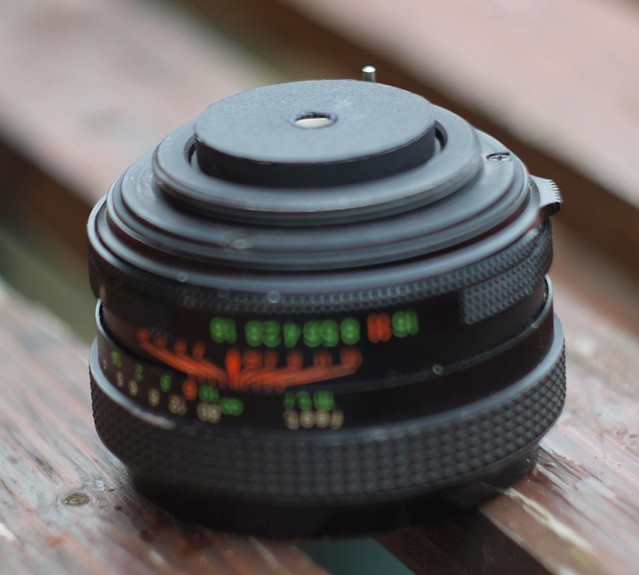
The one on the front was a good fit so it stays on by itself without any glue. This hole is about 16mm in diameter.
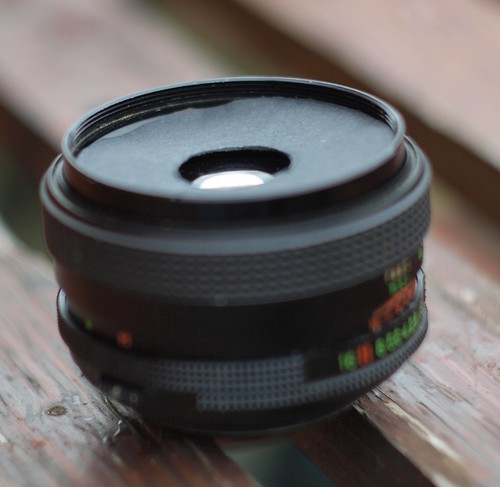
To cut paper, I use a Stanley knife. Then I sand it down with emery paper. Sorry, these are old-fashioned English terms for the tools in question, but I don't know the words in other languages.
The sizes (diameters of the holes) are quite critical and depend on your lens, in particular how long it is, its focal length, and what format you are shooting. I was shooting 4/3 with an image size about 1/2 that of a 35mm negative. For 35mm or "full frame" you might double my sizes. If you get vignetting your holes are too small. If you don't get vignetting they are too large. You want it so that you only just don't get vignetting, or you only get a little. That's for both holes.
Testing it
That's it! Now for the testing. As I said before, this "new" lens will behave just like a normal one most of the time, except that the aperture control won't have much effect except when it is very small. You need the right conditions, in particular to open up wide, focus close and have interesting background. When I tried it it worked straight away.
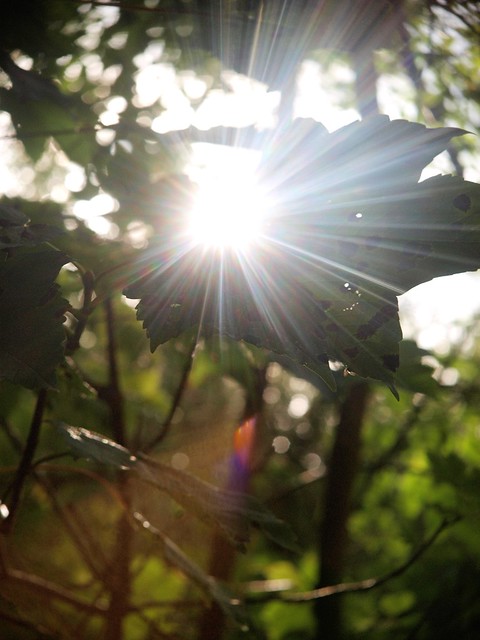
Don't look at the flare for a moment - look at the corners, and see how they swirl?
But the flare is a feature of this mod and I wasn't expecting it, but like it a lot. (I don't mean the orange and purple patch - that is due to the glass I was using and I'd seen that before. I mean the obvious white flary thing.) I have seen flares like this before - on roughly cut home-made pinhole cameras. The rough edge of the paper is making the flare. I don't fully understand how it works, and especially don't understand why colours appear. It's something to do with the rough edges behaving like a diffraction grating. But does it matter? Go out and enjoy it!
Finally
For the purists, this isn't the true Petzval swirl. These lenses are too good. For the real thing you need to add astigmatism or aberrations. I am not sure how to do that in the context of this "easy" mod. If you have any ideas do let me know.

